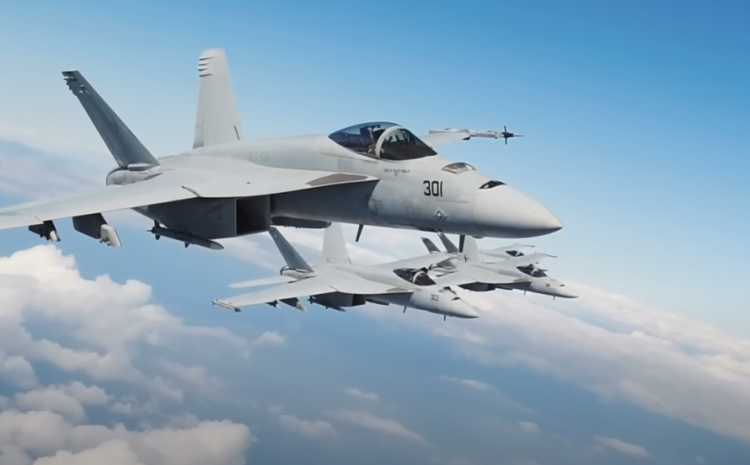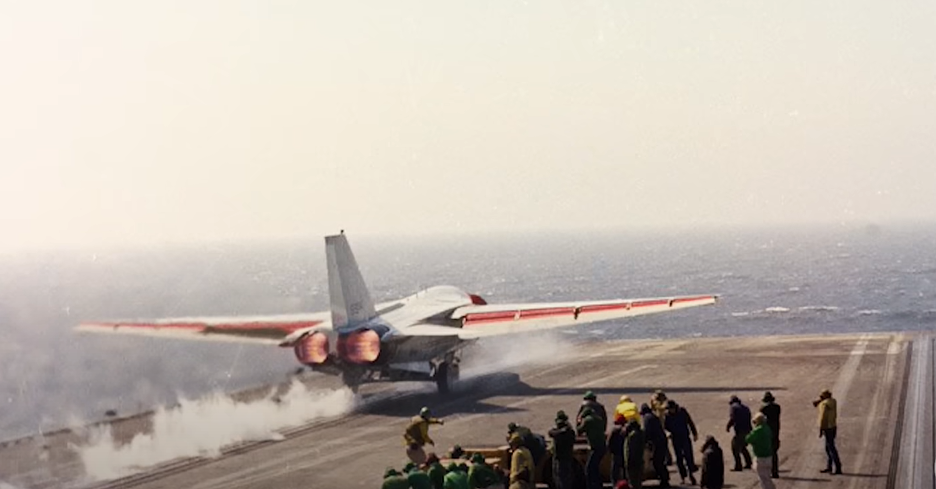Unravel the Speed of the F-14 Tomcat: A Supersonic Chronicle

Since its inaugural flight in the early 1970s, the F-14 Tomcat, a twin-engine, two-seat, twin-tail, variable-sweep wing fighter aircraft, has etched a legacy that transcends time. With its record-setting speed, it remains an integral part of U.S. military history and an exemplar of aviation ingenuity. This article offers an in-depth exploration of the F-14 Tomcat, with particular emphasis on its top speed, the technology that enables this velocity, and how it compares to other iconic aircraft of its era.
The Blueprint of Speed – Designing the F-14 Tomcat
The success of any aircraft resides in its design. A careful blend of aerodynamics, materials, and technology contribute to the functionality and performance of the aircraft. When it comes to the F-14 Tomcat, the most remarkable design element contributing to its speed is its variable-sweep wing.
Variable-sweep wings
Variable-sweep wings, also known as “swing wings,” provided the F-14 Tomcat with an exceptional advantage. By changing the aircraft’s wing geometry, it could perform optimally across a range of flight conditions. Here is how it works:
- High-Speed Flight: At high speeds, the wings were swept back. This action reduced the aircraft’s drag and allowed it to slice through the air more efficiently, thereby increasing its speed. This configuration also improved the aircraft’s stability at supersonic speeds;
- Low-Speed Flight & Maneuverability: For low-speed flight and when maneuvering, the wings were extended outwards, or “unswept”. This action increased lift and allowed the aircraft to maintain control at slower speeds or during takeoff and landing.
Twin-Tail Design
The F-14’s twin-tail design is a distinctive feature that significantly contributed to its exceptional stability and control during flight. This design consisted of two vertical stabilizers situated at the rear of the aircraft. One of the primary advantages of this configuration was its improved maneuverability, especially at high angles of attack. When engaged in aerial combat, pilots often found themselves in situations where the aircraft’s nose is pitched upward at steep angles relative to the oncoming airflow. In such scenarios, the twin-tail design played a crucial role in maintaining stability and preventing uncontrollable maneuvers.
To better understand the benefits of the twin-tail design, let’s take a closer look at its key advantages:
| Feature | Description |
|---|---|
| Enhanced Stability | The twin-tail setup provided increased directional stability, making it easier for pilots to maintain control of the aircraft, even during challenging flight conditions. This stability was particularly valuable during air-to-air combat maneuvers, where quick and precise adjustments were necessary to gain tactical advantages. |
| Improved Rudder Authority | The twin-tail arrangement offered greater rudder effectiveness, enabling the aircraft to execute tighter turns and better control yaw movements. This capability was essential for dogfighting situations, where the F-14 needed to outmaneuver adversaries effectively. |
| Reduced Aerodynamic Interference | The spacing and positioning of the twin vertical stabilizers minimized aerodynamic interference, allowing the F-14 to maintain its agility and responsiveness. This design feature also helped prevent undesirable yaw coupling, where movements in one axis affect movements in another. |
The Powerhouse – Engines of the F-14 Tomcat

Under the hood, the F-14 Tomcat housed two Pratt & Whitney TF30-P-414A turbofan engines, the true workhorses responsible for propelling this supersonic marvel to its top speed.
Turbofan Engines
The Pratt & Whitney TF30-P-414A engines were low-bypass turbofan engines. In simple terms, a turbofan engine works by sucking in air, compressing it, mixing it with fuel, and igniting it. The resulting explosion drives a turbine, which in turn drives a fan, producing thrust.
In a low-bypass engine like the TF30, a significant portion of the air is directed through the combustion process, which can produce high amounts of thrust and contribute to the overall speed of the aircraft.
- Maximum Thrust: Each TF30-P-414A engine could produce a maximum thrust of 20,900 lb with afterburner, enabling the F-14 to accelerate rapidly and maintain high speeds;
- Afterburners: Afterburners are additional combustion components used in jet engines to provide a temporary boost in speed and power. When engaged, extra fuel is injected directly into the exhaust stream. The heat from the exhaust gases ignites this fuel, significantly increasing the engine’s thrust and propelling the aircraft to its peak speed.
Engine Upgrade
As the F-14 Tomcat progressed in its service life, an important upgrade was implemented, replacing its original TF30 engines with more advanced General Electric F110-GE-400 engines. This engine upgrade brought significant improvements to the aircraft’s performance, reliability, and maintenance, cementing the F-14’s status as a high-speed and formidable fighter jet.
The following details highlight the key aspects of the engine upgrade:
| Feature | Description |
|---|---|
| Enhanced Thrust Output | The replacement of the TF30 engines with the F110-GE-400 engines resulted in a substantial increase in thrust output. The F110 engines offered greater power and efficiency, enabling the F-14 to achieve higher speeds and accelerate more rapidly. This boost in thrust was particularly advantageous during combat situations, allowing the aircraft to respond swiftly to threats and execute tactical maneuvers effectively. |
| Improved Reliability | The F110 engines were renowned for their enhanced reliability compared to the original TF30 engines. The upgrade addressed issues related to engine failures and increased the overall operational readiness of the F-14 fleet. With improved reliability, the F-14 became more dependable in various mission profiles, ensuring pilots could count on the aircraft’s performance in critical situations. |
| Ease of Maintenance | The F110-GE-400 engines brought advancements in maintenance procedures, making it easier for ground crews to service and support the F-14. Simplified maintenance routines and improved access to engine components reduced turnaround times between missions, enhancing the aircraft’s availability and reducing operational downtime. This aspect was crucial in ensuring that the F-14 remained mission-ready and maximized its operational efficiency. |
The F-14’s Notable Speed and Performance

One of the key features of the F-14 Tomcat is its top speed. In this section, we dive into the specifics of its speed and how it performs under various circumstances.
Achieving Top Speed
The F-14 Tomcat was capable of achieving a top speed of Mach 2.34, equivalent to 1,544 mph or 2,485 km/h at high altitude. This speed was largely attainable due to the aircraft’s variable-sweep wing design and the raw power output of its TF30-P-414A engines with afterburners engaged.
Performance at Different Altitudes
The F-14’s performance varied depending on the altitude:
- At Sea Level: At sea level, where the air density is highest, the F-14 Tomcat could cruise comfortably at Mach 0.72, equivalent to 531 mph or 855 km/h;
- At High Altitude: At higher altitudes, where the air density is lower, the F-14 could reach its maximum speed of Mach 2.34.
Other Performance Metrics
Besides its speed, the F-14 Tomcat also had impressive range and climbing capabilities:
- Combat Radius: The F-14 had a combat radius of 500 nmi (575 mi, 926 km), which is the distance it could fly into combat, carry out its mission, and return to its base;
- Ferry Range: With additional fuel reserves and without armaments, the F-14 had a ferry range of 1,600 nmi (1,840 mi, 2,960 km), demonstrating its capacity for long-distance travel;
- Rate of Climb: The F-14’s powerful engines also enabled it to ascend rapidly into the sky, with a rate of climb of 45,000 ft/min (229 m/s).
Comparing the F-14 Tomcat’s Speed to Other Aircraft
To put the F-14’s speed into context, we compare it with other fighter aircraft from its era. The comparisons illuminate the F-14’s standing among its contemporaries.
| Aircraft | Developed By | Type | Maximum Speed | Equivalent (mph) | Equivalent (km/h) |
|---|---|---|---|---|---|
| F-15 Eagle | McDonnell Douglas (now Boeing) | Twin-engine, all-weather tactical fighter | Mach 2.5 | 1,650 | 2,655 |
| MiG-25 Foxbat | Soviet-era | Interceptor and reconnaissance aircraft | Mach 2.83 | 1,860 | 2,990 |
| Mirage 2000 | Dassault Aviation | Multirole combat fighter | Mach 2.2 | 1,450 | 2,335 |
Conclusion
The F-14 Tomcat’s top speed, a remarkable Mach 2.34, is a testament to its superior design, powerful engines, and revolutionary aerodynamics. Despite being retired from active service, the F-14 continues to hold a significant place in aviation history as one of the fastest and most innovative fighter aircraft ever built. Its legacy of speed continues to inspire the design of fighter aircraft today.
FAQ
The F-14 achieves its top speed of Mach 2.34 through a combination of its powerful TF30-P-414A engines, the use of afterburners, and its variable-sweep wing design.
The variable-sweep wing design allowed the F-14 to change its shape based on speed and altitude. When the aircraft reached high speeds, the wings swept back to reduce drag and increase stability, enabling the F-14 to achieve its maximum speed.
The twin-tail design of the F-14 provided enhanced stability and control. This design allowed for better maneuverability, particularly at high angles of attack, a scenario often encountered in aerial combat.
The F-14’s top speed was competitive with other iconic fighter aircraft of its era, such as the F-15 Eagle, MiG-25 Foxbat, and the Mirage 2000.
The afterburners in the F-14’s engines provided a temporary boost in speed and power. They did this by injecting extra fuel directly into the exhaust stream, which ignited due to the heat from the exhaust gasses. This process increased the engine’s thrust and helped propel the aircraft to its peak speed.